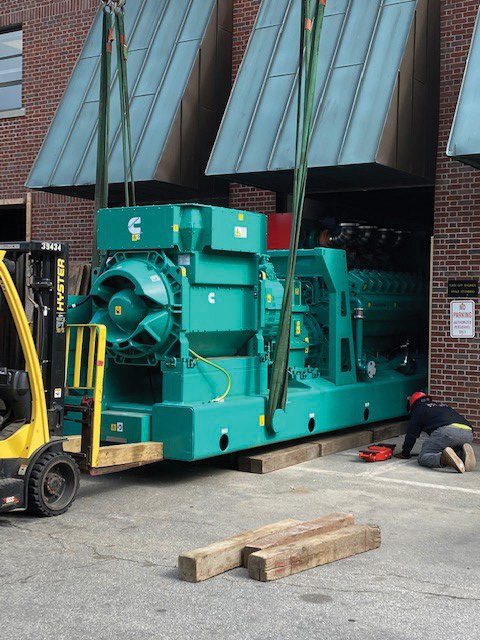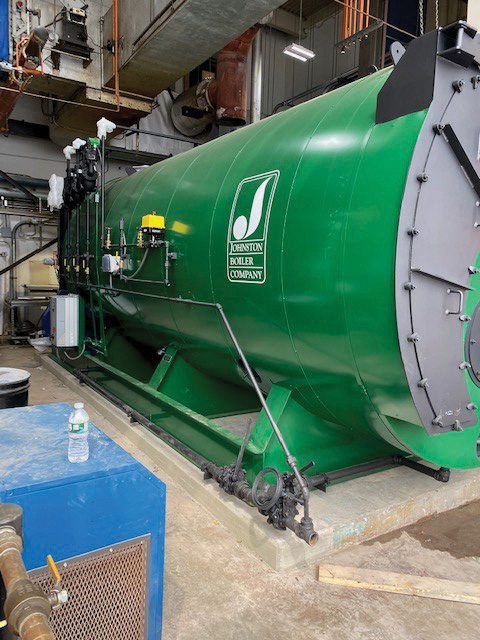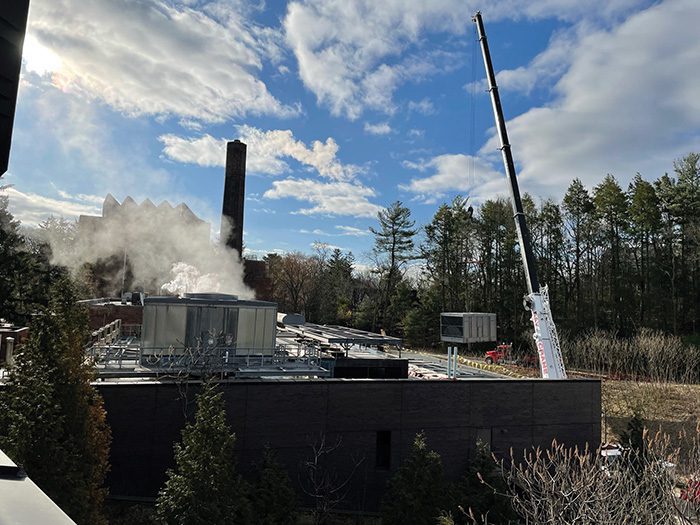Upgrading a Campus Energy System as Part of a Carbon-Reduction Effort
Educational institutions increasingly are upgrading their physical utility infrastructure to become more efficient in their use of energy while addressing the reliability of the energy supply on their campus. It’s a trend across the country, and globally, as campuses seek ways to reduce their carbon footprint and their energy costs while increasing resiliency in the wake of increased storm intensities.
Wellesley College in Massachusetts, a renowned institution considered one of the top liberal arts colleges in the U.S., is an example. In the fall of 2020, Ameresco, an advanced technology integrator specializing in energy efficiency and renewable energy, was selected to provide clean technology solutions to replace Wellesley’s antiquated Central Utility Plant.
The partnership made sense on several levels. Ameresco’s innovative approach matched well with a college known for its progressive sustainability policies and history of illustrious alumnae, including environmental activist Marjory Stoneman Douglas, astronaut Pamela Melroy, and politician/diplomat Hillary Rodham Clinton. By implementing the proposed energy infrastructure upgrades, the institution is benefiting from a significant cost savings, increased resiliency—and most importantly—supporting the college’s efforts to meet its environmental sustainability objectives.
“At Wellesley, we believe that responsible stewardship begins at home, and are committed to reaching efficiency goals,” Dave Chakraborty, assistant vice president for facilities management and planning at Wellesley, said in a statement earlier this year when the college announced details of the project. “This project will move Wellesley forward towards a more sustainable future and helps achieve our goal of reducing campus greenhouse gas [GHG] emissions 37% by 2026, as compared to the institution’s 2010 baseline.”
Replacing an Aging Facility
Plans for an alternative to the aging energy facility began back in December 2017. At the time, Wellesley had a reciprocating engine-driven combined heat and power (CHP) facility with a vintage chiller plant that ran continuously on natural gas. Since the cogeneration plant had been running for more than 20 years—24 hours a day, seven days a week, 365 days a year—all the associated equipment had reached the end of its useful life.
Realizing it was time for a change but hesitant to work toward any plan that proposed complete removal of the plant, Wellesley officials wanted to develop a road map that reduced the use of natural gas in compliance with its carbon-reduction efforts and maintained the lowest energy costs. Ameresco devised a plan to use proven advanced technologies that would meet these objectives.
 |
|
4. A Cummins natural gas-fueled generator is moved into the new peaking power plant at Wellesley College in Massachusetts. The generator is among the equipment used to replace an aging energy system at the campus. Courtesy: Ameresco |
Equipment installations at the plant included 4 MW of natural gas-fueled reciprocating engine generators (Figure 4), paralleling switchgear, 800-ton efficient electric chillers, a 600-hp firetube pony boiler (Figure 5), a five-cell cooling tower, and a 4,000-ton thermal energy storage system. A key component of this plan was to operate the project only in a peaking capacity. This mode prioritized carbon reductions while ensuring the lowest utility rates. This plan resulted in a power plant that only operates a few hundred hours a year as is necessary to reduce the peak utility electric demand requirement. This has reduced the college’s use of natural gas by almost 90%.
 |
|
5. This boiler from Johnston Boiler Co. is among the upgrades at Wellesley College’s campus utility facility. Courtesy: Ameresco |
By utilizing the new peaking power plant, boilers, electric chillers, cooling thermal storage, and absorption chillers, Wellesley College can effectively manage its utility electric demand, its power usage, and reduce its GHG emissions. The thermal energy storage system operates the electric chillers during low-cost electric periods, stores the cold water underground, and then allows for the low-cost cold-stored water to be utilized when it would otherwise be very expensive to rely on the electric chillers.
Cost Savings, Emissions Reduction
Avoiding peak demand charges by generating power only during the hottest summer periods is saving the college nearly $1 million annually. The new generation facility is a dispatchable resource hardening the college’s defense to utility disruptions. And the overall reduction in carbon emissions (estimated at 5,630 metric tons per year) is helping Wellesley meet its carbon-reduction goals.
Ameresco, which has worked with a variety of municipal utilities across North America and the UK, used its experience in this domain to work with Wellesley Municipal Light Plant (WMLP), the town-owned utility, to help maintain Wellesley’s lowest power rate. Most of the output from Ameresco’s working renewable energy power plants across the U.S. is sold to local municipal utility companies, so the renewable energy company is no newcomer to collaborating with these groups. In this case, involving a complicated set of solutions, a tremendous amount of coordination from all parties was needed to enable alignment on a project that would benefit all key stakeholders.
For colleges and universities across the country, marrying cost savings and sustainable solutions (while improving resiliency) is a universally held common goal. Today, most institutions understand the need for action, but identifying solution sets that speak to both priorities can often seem like a conversely related and overwhelming task. Construction (Figure 6) on Wellesley College’s new Central Utility Plant began in December 2020 and entered its commissioning phase in May 2021, in time to be operational for the summer season when electricity demand peaks.
 |
|
6. Construction on the new Central Utility Plant at Wellesley College in Massachusetts began in December 2020; the commissioning phase began in May of this year. Courtesy: Ameresco |
Wellesley College’s innovative approach to upgrading its Central Utility Plant is no surprise, as it’s a progressive institution highly regarded for its forward-thinking sustainability goals. As Chakraborty noted, the college has a goal of reducing campus GHG emissions by 37% by 2026, as compared to the institution’s 2010 baseline. Given all of the excitement and desire to become greener and operate more sustainably, prioritizing feedback and input from Wellesley’s key stakeholders, including its student body, was a priority throughout the entire planning process.
Environmental Concerns
Student groups were especially keen on finding ways to significantly reduce the use of natural gas on campus. According to a 2019 Porter Novelli/Cone Gen Z Purpose Study, which surveyed U.S. youth between the ages of 14 and 22, 87% of Gen Z expressed significant concerns about the environment and future of the planet. In an effort to better understand the concerns of its key stakeholders and find ways to actively involve their input, Wellesley College created a group called Power4Women Task Force, which included students, faculty, and board representatives, to focus on planning future sustainability initiatives for the institution.
These conversations resulted in the development of the implemented solution set, which aligned with the college’s priorities. Ameresco spoke with student groups at Wellesley about the future of the energy and the engineering industry, and even brought two Wellesley students on board as interns to work on the project, as well as others. The project became more than just the development of a new energy system; it served as a tool to educate students about the importance of energy efficiency and sustainability, along with outlining opportunities for students in the energy industry.
The Wellesley College project provides a model for making a campus more sustainable through consideration of technical applications and financial models, with input from all interested parties—including the student body. It enabled the college to take a lead role in pursuing a more sustainable future and showed that replacing outdated equipment on campus does not have to be a money pit. Identifying energy-efficient solutions can provide financial benefits to all stakeholders, and in this case meeting the needs of the campus including advancing the college’s sustainability goals.
—Michael Bakas is executive vice president of Distributed Energy Systems at Ameresco.